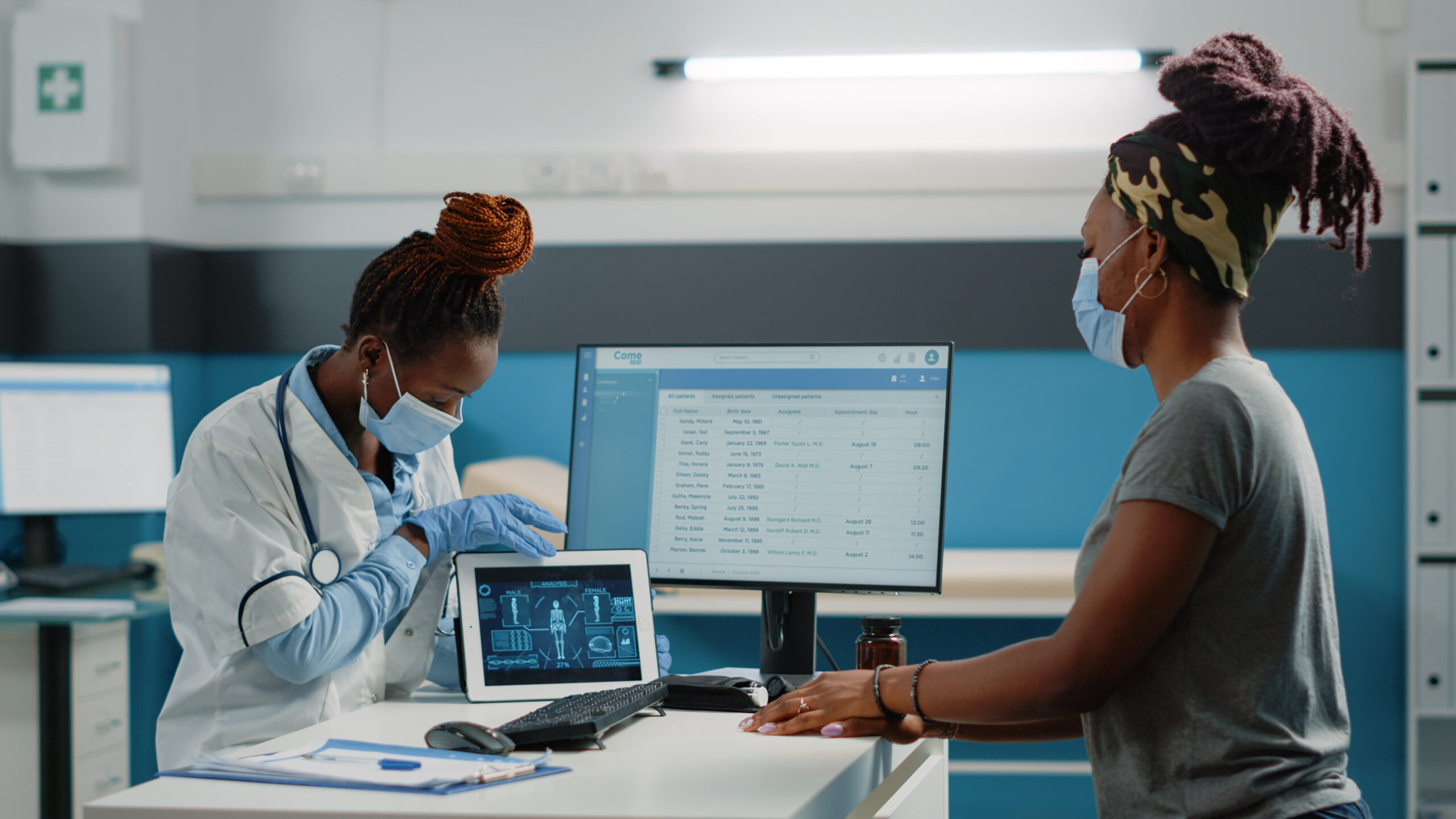Remote Healthcare Jobs: Telehealth & Medical Coding in 2025
The remote healthcare landscape has dramatically and successfully transformed in recent years. Spurred by the pandemic, advances rapidly in digital tools, and evolving patient preferences, remote roles—especially in telehealth and medical coding—have shifted from niche options to mainstream career paths. This post dives deep and very relatable into these two in‑demand fields, exploring the types of jobs and personnel available, key skills, certifications, salary expectations, industry trends, and practical tips for launching and advancing your remote healthcare career. Avoid any distraction as you read, so that you wouldn’t miss any information.
1. Telehealth Careers: Bringing Care to Screens
Telehealth refers to using digital communication—video conferencing, phone, and secure online platforms—to deliver healthcare services across distance (Reddit). This includes:
- Real-time video consultations (synchronous)
- Asynchronous communications (e.g., sending photos or messages)
- Remote patient monitoring (tracking health data from home)
- Tele-nursing, tele-psychology, tele-dermatology, etc.
Why It’s Booming
Global telehealth spending is expected to nearly double from about $94 billion in 2024 to over $180 billion by 2030 (11.5% CAGR), while the U.S. market alone is growing at nearly 24% annually (ScienceSoft). Post-pandemic, telehealth remains strong: estimates suggest it now accounts for 20–30% of all patient visits .
Popular Remote Telehealth Roles (2025)
Entry-level positions today include:
- Telehealth Administrative Assistant – managing scheduling, processing patient intake.
- Virtual Medical Scribe – real-time documentation during consultations.
- Remote Patient Coordinator – guiding patients through virtual care journeys.
- Telenurse / Teletriage – nurse-led assessments via phone/video.
Average annual salaries mark:
- Telehealth Administrative Assistant: $34,000–$52,000
- Virtual Medical Scribe: ~$30,000–$48,000
- Remote Patient Coordinator: $32,000–$50,000 (The HealthPreneur, Wikipedia)
More advanced roles (nurse practitioners, physicians, clinicians) offer significantly higher compensation.
What You Need to Succeed in Telehealth
A. Technical & Digital Literacy
Skill with telehealth platforms (Zoom for Healthcare, Doxy.me), EHR systems (like MyChart), and remote monitoring technologies (blood pressure or glucose sensors) is essential (Reddit).
B. Licensing & Compliance
Medical professionals must maintain state-level licensure where the patient resides; tools like the Nurse Licensure Compact help, but legal requirements remain strict (Wikipedia).
C. Patient Privacy & HIPAA
Every interaction and platform must be HIPAA-compliant. Providers need encrypted communications and robust data protection protocols (Reddit).
D. Strong Communication
Clear verbal and written skills are key. Remote clinicians must build rapport and communicate effectively without in-person interaction.
2. Medical Coding: The Backbone of Remote Health Administration
Medical coders translate diagnoses, procedures, and services into standardized codes (ICD‑10‑CM, CPT, HCPCS) for billing, analytics, and compliance (AMBCI, medicalcoder.in). Billers use these codes to prepare and submit claims to insurance providers.
Strong Hands, Clear Purpose
Medical coding is vital for:
- Timely reimbursements
- Claims accuracy (minimizing denials)
- Legal compliance (HIPAA, CMS)
- Financial stability for healthcare providers (AMBCI, medicalcoder.in, CodeEMR, Advanced Coding Services)
Demand & Growth Outlook
U.S. coders’ employment is expected to grow about 7–9% through 2031, faster than average (medicalcoder.in).
The global medical coding market may double from $42 billion in this 2025 to near $90 billion by 2033, reflecting technological evolution and increased demand (CodeEMR).
Recent studies suggest 65% of billing/coding tasks can be performed remotely (WifiTalents). Many providers now embrace remote hires to reduce overhead and access a broader talent pool.
Certification, Training & Salary
Common certifications:
- CPC® – outpatient coding
- CCS® – hospital settings
- CPMA® / CPB® – auditing and billing
- HCC coding – for value-based care (Advanced Coding Services, medicalcoder.in)
Salary (U.S. remote):
- Entry-level: ~$45k–55k
- Mid-level: median ~$50k, with increases to ~$83k for specialists (AMBCI)
- Certified & specialist coders can earn $70k–90k+, with auditor/trainer roles reaching up to $95k (AMBCI)
Remote roles often reflect the employer’s geographical base, with California and New York offering higher pay .
3. Industry Trends Shaping 2025
A. AI & Automated Coding
AI-powered tools now generate coding suggestions and automate data entry. Still, human oversight is essential for complex cases. Skilled coders increasingly train AI, review outputs, and handle edge cases (medicalcoder.in).
B. Shift to Value-Based Care & Mental Health
Billing is evolving: value-based reimbursements and increased mental health coding require nuance and specialty knowledge (5-Tek Medical).
C. ICD-11 & Extended Standards
Global coding standard updates (ICD‑11) demand training to stay relevant and ensure compliance (Advanced Coding Services).
D. Regulatory Environment & Cybersecurity
Remote coders handle sensitive data; HIPAA and other regulations require strong internal controls, remote access security, and encryption .
E. Telehealth Policy Changes
Medicare’s expanded telehealth coverage post-2020 will shrink unless federal extensions are passed; commercial insurance may vary (Reddit).
4. Getting Started in Your Remote Healthcare Career
Telehealth Pathway
- Education & Licensure – Acquire the appropriate degrees or credentials; stay licensed where patients reside.
- Technical Setup – Familiarize yourself with telehealth platforms and EHRs.
- Target Entry Roles – Apply for virtual assistant, scribe, coordinator positions.
- Gain Experience & Specialize – Advance into roles like tele-nurse or counselor.
- Stay Legal – Monitor state licensure and billing rules.
- Stay Up to Date – Regularly review new technologies, telehealth regulations, patient privacy laws.
Medical Coding Pathway
- Training & Certification – Enroll in courses, earn CPC or CCS credentials.
- Hands-On Practice – Use real or simulated records.
- Entry-Level Hiring – Start in on-site roles if possible; employers often require 1–2 years before transitioning remote .
- Remote Transition – Apply for remote roles once certified and experienced.
- Advanced Specialties – Explore risk-adjustment, auditing, compliance, training.
- Continuous Education – Keep certifications active and learn ICD‑11, AI tools, HCC coding trends.
5. Where to Find Remote Healthcare Jobs
Top platforms include:
- FlexJobs, Remote.co, We Work Remotely, Virtual Vocations (medicalcoder.in, The HealthPreneur)
- Freelance marketplaces: Upwork, Fiverr
- Job boards for professionals: Indeed, LinkedIn, Jobspresso (The HealthPreneur)
Niche employers in telehealth and coding often include Teladoc Health, ScribeAmerica, UnitedHealth, Cognizant, CVS Health (The HealthPreneur).
6. Challenges & Considerations
Licensing Across Jurisdictions
Telehealth providers must comply with licensing across patient locations; interstate compacts help nurses but not all states (Wikipedia).
Data Privacy Risks
Remote work introduces cybersecurity concerns. Coders & clinicians risk burnout, isolation, and potential data breaches if protocols lapse (WifiTalents).
Onboarding Difficulties
Employers may require in-person training before permitting remote work .
7. Future Outlook: Where to Focus
- AI augmentation offers coders opportunities to oversee intelligent systems.
- Value-based care coding, risk-adjustment specialists, tele-mental health specialists remain in high demand.
- Remote patient monitoring roles are growing as RPM technologies proliferate (medicalcoder.in, Wikipedia).
- Tele-nursing and teletherapy are becoming mainstream specialties (Wikipedia).
Conclusion
Remote healthcare work in telehealth and medical coding offers rewarding, flexible, and growth-oriented career paths. Having the right skills—digital tools, certifications, legal backup, and domain knowledge—can present you for a better remote opportunities. While the shortcomings around compliance, training, and cybersecurity remain, the long-term job outlook is the best, with technology and policy trends pointing upward. With the right plan, remote healthcare roles can deliver stable income, professional and very contemptible, and work-life balance.
Next Steps:
- Decide which track suits you: telehealth (patient-facing, licensed) or coding (analytical, administrative).
- Enroll in training or certification programs (CPC, CCS, nursing degree, etc.).
- Build experience through internship, volunteer work, or entry-level roles.
- Network within remote healthcare communities.
- Craft a resume highlighting digital/remote experience and certification.
Useful Remote Healthcare Resources
| Resource Name | Description | Visit |
|---|---|---|
| AAPC – Medical Coding Certification | Official site for CPC and other medical coding certifications. | Go to AAPC |
| Telehealth.HHS.gov | U.S. government resource on telehealth policy and best practices. | Go to Telehealth HHS |
| FlexJobs | Curated remote job listings including healthcare roles. | Go to FlexJobs |
| AHIMA | Health information management certification and training. | Go to AHIMA |






